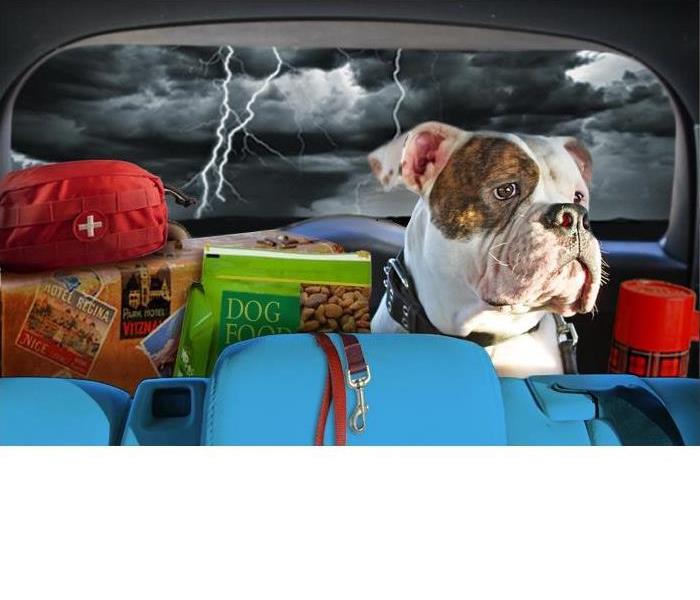Preparing Your Pets for Emergencies
9/3/2019 (Permalink)
SERVPRO Industries, LLC is once again proud to be a member of the National Preparedness Month Coalition and is committed to helping the U.S. Department of Homeland Security in their efforts to promote the importance of preparedness planning.
When making plans in preparation of an emergency, don’t forget to plan for your pets. Part of making this plan is preparing an emergency kit for you pet just as you would with all other members of your family.
Just as you do with your family’s emergency supply kit, think first about the basics for survival, particularly food and water.
- Food: Keep at least three days of food in an airtight, waterproof container. ü Water: Store at least three days of water specifically for your pets, in addition to water you need for yourself and your family.
- Medicines and medical records: Keep an extra supply of medicines your pet takes on a regular basis in a waterproof container.
- First aid kit: Talk to your veterinarian about what is most appropriate for your pet’s emergency medical needs. Most kits should include cotton bandage rolls, bandage tape and scissors; antibiotic ointment; flea and tick prevention; latex gloves, isopropyl alcohol and saline solution. Include a pet first aid reference book.
- Collar with ID tag, harness or leash: Your pet should wear a collar with its rabies tag and identification at all times. Include a backup leash, collar and ID tag in your pet’s emergency supply kit.
- Important documents: Place copies of your pet’s registration information, adoption papers, vaccination documents and medical records in a clean plastic bag or waterproof container and also add them to your kit.
- Crate or other pet carrier: If you need to evacuate in an emergency situation take your pets and animals with you, provided that it is practical to do so.
- Sanitation: Include pet litter and litter box if appropriate, newspapers, paper towels, plastic trash bags and household chlorine bleach to provide for your pet’s sanitation needs. You can use bleach as a disinfectant (dilute nine parts water to one-part bleach), or in an emergency you can also use it to purify water. Use 8 drops of regular household liquid bleach per gallon of water, stir well and let it stand for 30 minutes before use. Do not use scented or color safe bleaches or those with added cleaners.
- A picture of you and your pet together: If you become separated from your pet during an emergency, a picture of you and your pet together will help you document ownership and allow others to assist you in identifying your pet. Include detailed information about species, breed, age, sex, color and distinguishing characteristics.
- Familiar items: Put favorite toys, treats or bedding in your kit. Familiar items can help reduce stress for your pet.
Consider two kits. In one, put everything your pets will need to stay where you are and make it on your own. The other should be a lightweight, smaller version you can take with you if you and your pets have to get away.

 24/7 Emergency Service
24/7 Emergency Service
